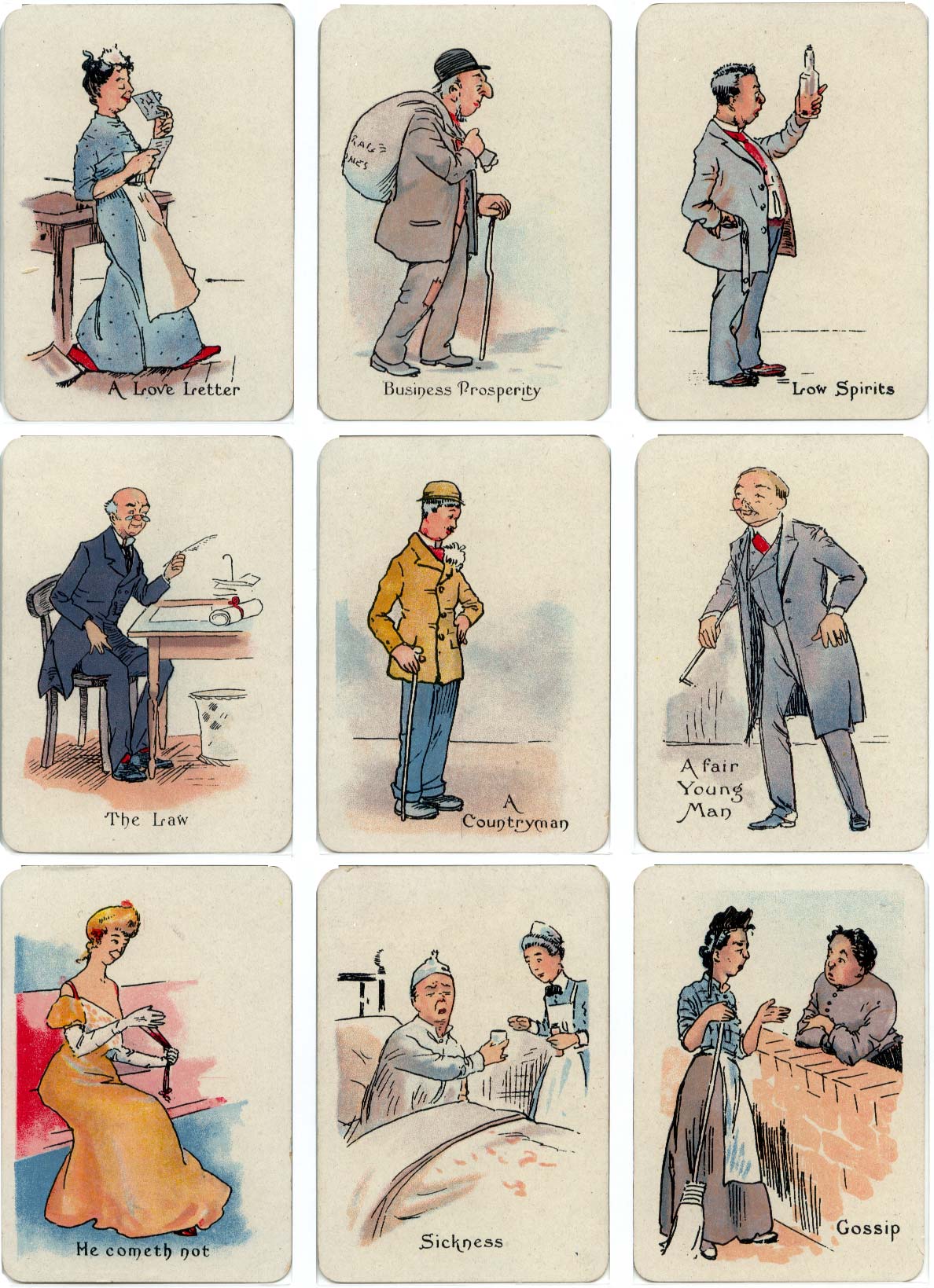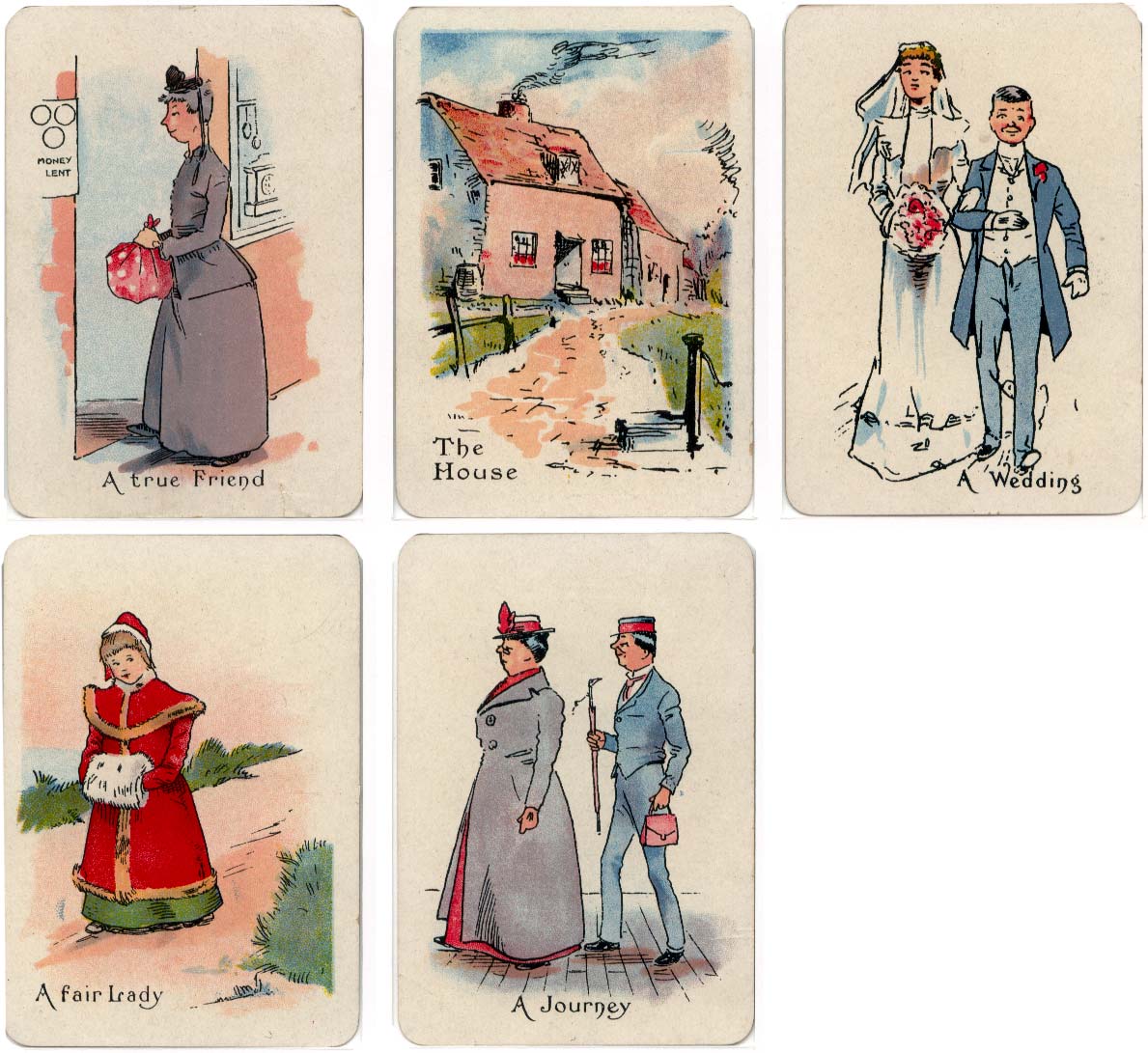Gipsy Fortune Telling Cards
“Gipsy” fortune-telling cards with original artwork by Hylton Cock, published by Thomas de la Rue & Co Ltd., c.1910.
The “Gipsy” fortune-telling cards with original artwork by Hylton Cock were published by Thomas de la Rue & Co Ltd in c.1910. The pack comes in a stiff slide-box embellished with gold on dark green, and contains thirty-three cards, thirty-two of which are illustrated in colour with designs of various meanings. The thirty-third card is left blank and represents the person whose fortune is being told.
The cards have no suit symbols or numbers, just a title. At least two different back designs are known. The same images were also published as “The Wizard Fortune Telling Cards” by Milton Bradley Co (Springfield, USA) in 1908 with plain cream backs.
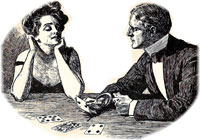
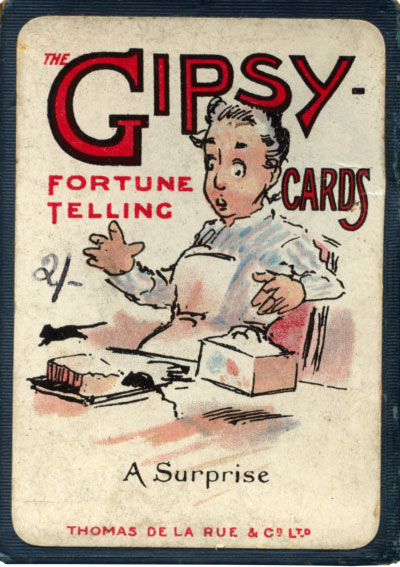
The Edwardian artwork, from just after the Victorian era, reflects the historical character and visual culture of the beginning of the 20th century when traditional values were still in place but modernity was about to emerge. The instructions included with the cards state that “it must be remembered that fortune tellers do not pretend that a pack of cards can of itself tell a person’s fortune, the claim invariably being that the medium tells the fortune and uses the cards as his instruments.”
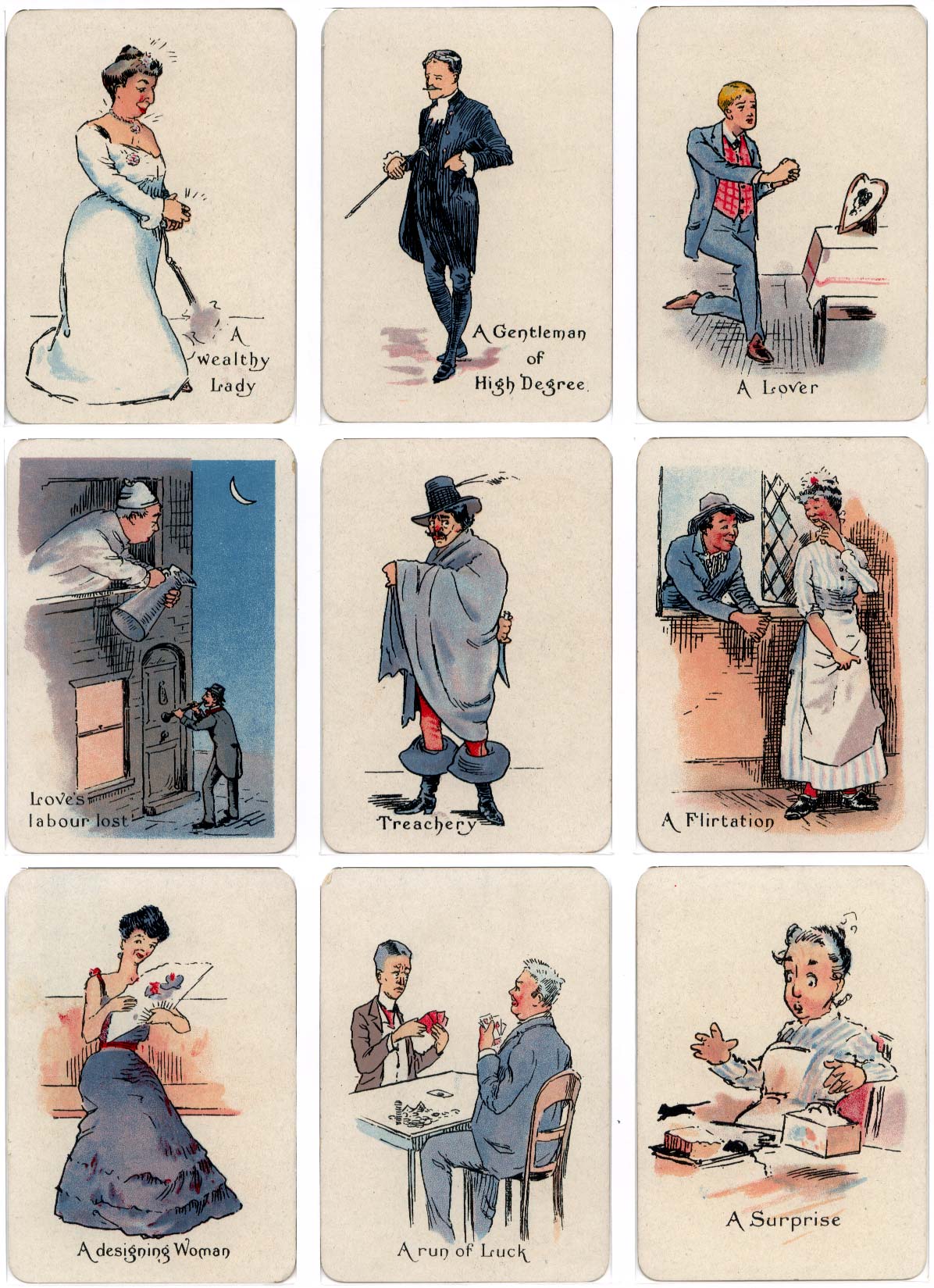
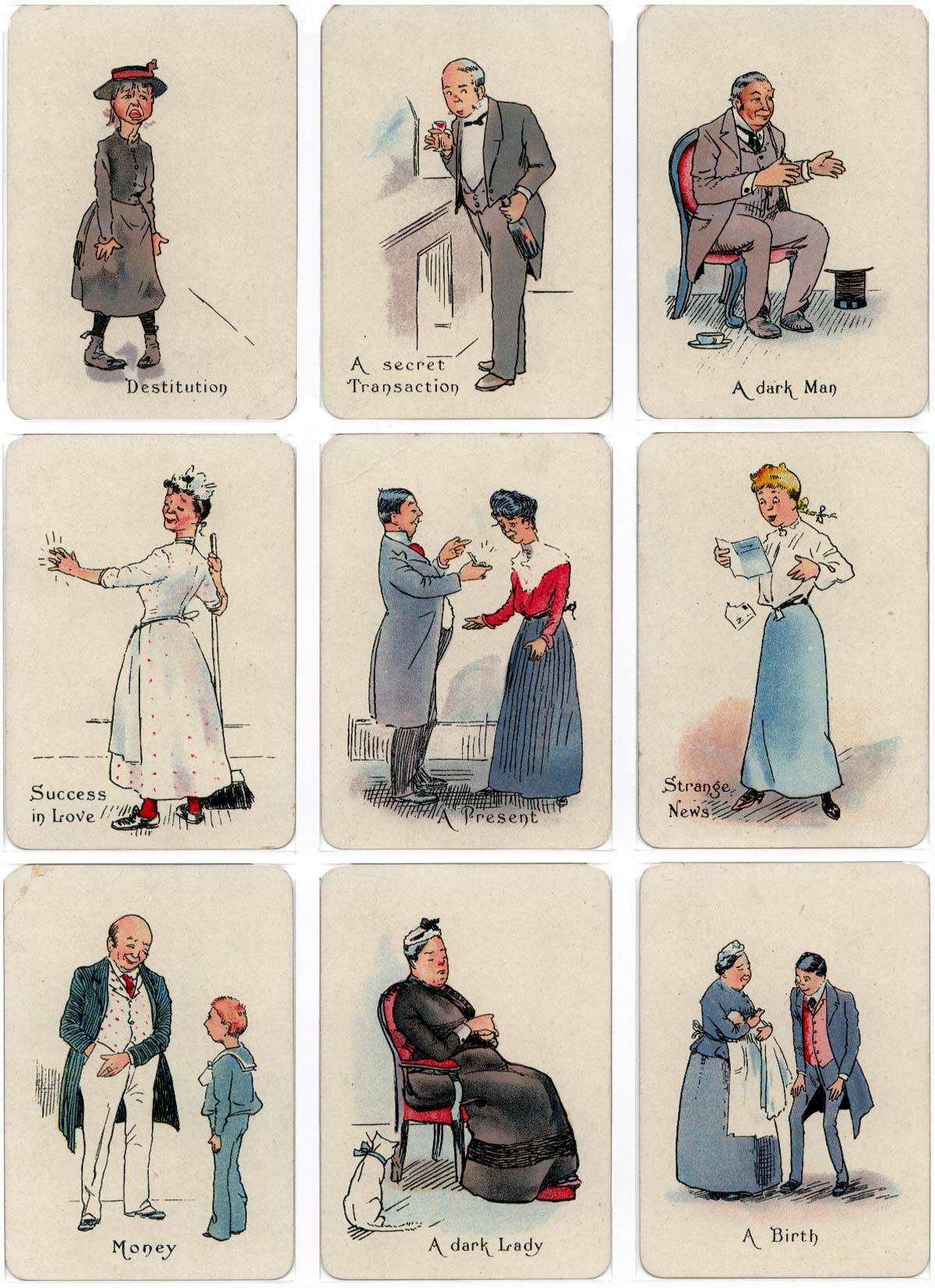
Above: “Gipsy” fortune-telling cards with original artwork by Hylton Cock published by Thomas de la Rue & Co Ltd., c.1910. Images courtesy Rex Pitts.

By Rex Pitts (1940-2021)
Member since January 30, 2009
Rex's main interest was in card games, because, he said, they were cheap and easy to get hold of in his early days of collecting. He is well known for his extensive knowledge of Pepys games and his book is on the bookshelves of many.
His other interest was non-standard playing cards. He also had collections of sheet music, music CDs, models of London buses, London Transport timetables and maps and other objects that intrigued him.
Rex had a chequered career at school. He was expelled twice, on one occasion for smoking! Despite this he trained as a radio engineer and worked for the BBC in the World Service.
Later he moved into sales and worked for a firm that made all kinds of packaging, a job he enjoyed until his retirement. He became an expert on boxes and would always investigate those that held his cards. He could always recognize a box made for Pepys, which were the same as those of Alf Cooke’s Universal Playing Card Company, who printed the card games. This interest changed into an ability to make and mend boxes, which he did with great dexterity. He loved this kind of handicraft work.
His dexterity of hand and eye soon led to his making card games of his own design. He spent hours and hours carefully cutting them out and colouring them by hand.
Related Articles

Ben 10 playing cards
Characters from the American animated television science fantasy series Ben 10.

Doctor Who Trump Card Game
Game for two players in which Doctor Who and the Legendary Legion join battle with the Alien Hordes....

Tarot hiéroglyphique égyptien
The design of the cards draws inspiration from various religious and philosophical traditions merged...

Disney’s Aladdin playing cards
Characters from the 1992 Disney film Aladdin.

2011 Worshipful Company Pack
Celebrating the bicentenary of the birth of Charles Dickens, with characters adapted from drawings b...

Oracle Rock
Cartomantic set depicting rock and pop stars, designed by La Rata, with a book by Virginie Despentes...

Jockey Club de Buenos Aires
Spanish-suited pack by Chas Goodall & Son Ltd for the Jockey Club, Buenos Aires.

Eki karuta
Japanese fortune-telling cards based on I Ching, with bold, modern designs.

New interest in old games
Games once fashionable are now eclipsed by quicker gratifications.

Polygo™
Cards of irregular, four-sided shape for playing word and colour games as well as more traditional o...

Treasures from the Bodleian Library
Rare books, manuscripts, music scores, portraits, maps, gospels, chronicles and other valuable artef...

Victorian grocer’s scale plate
Large flat plate decorated with highly coloured English cards and royal arms.

Queen of Arts
A wide variety of women artists celebrated on cards with illustrations by Laura Callaghan.

The Glasgow Pack
Issued to celebrate Glasgow’s reign as European City of Culture in 1990, with city views and works o...

Cathedrals, Abbeys & Minsters playing cards
54 pictures of different famous cathedrals, abbeys and minsters in England and Wales.

Christmas Carols
Christmas Carols playing cards illustrated by Stuart Dilks
Most Popular
Our top articles from the past 28 days


